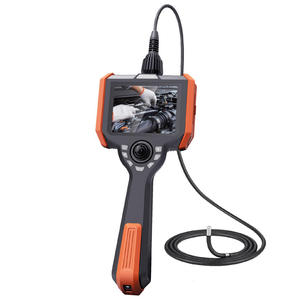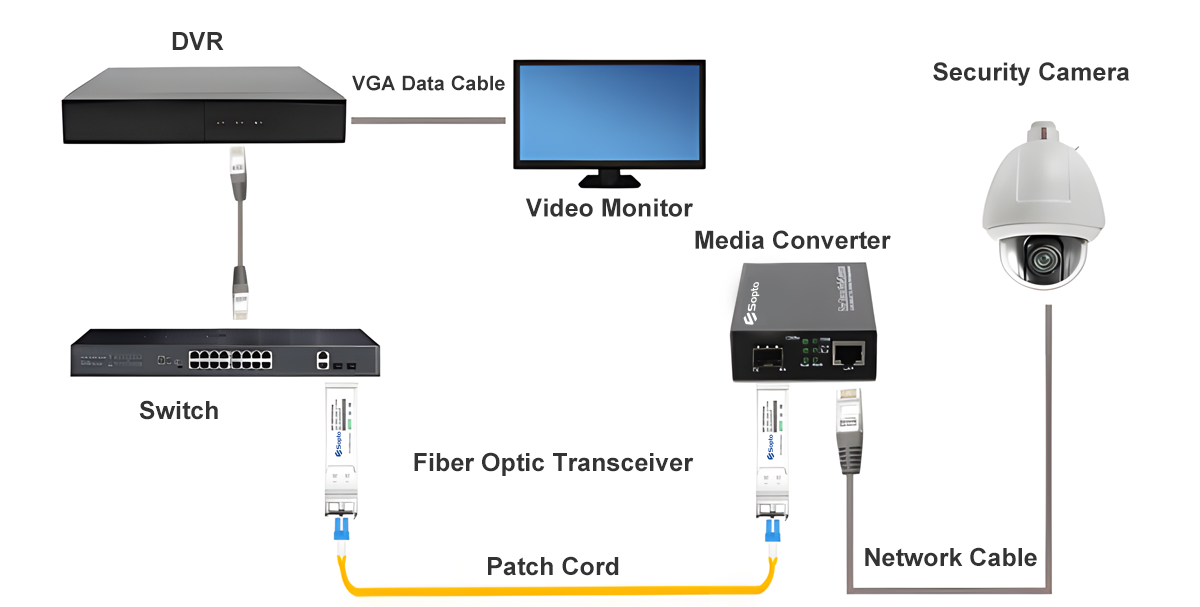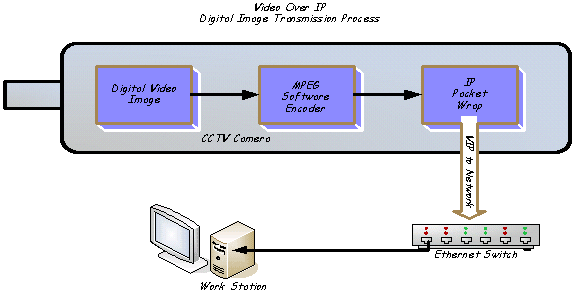Leading Reasons to Choose CCTV Cameras With Fiber Optic Outcome for Trusted Monitoring
In the advancing landscape of security innovation, the selection of CCTV cams with fiber optic result offers a compelling instance for dependability and efficiency. As the need for high-grade security continues to climb, recognizing the cost-effectiveness and flexibility of these installations becomes extremely important.
Superior Photo Quality

This enhanced photo high quality is particularly vital in setups requiring careful tracking, such as financial institutions, airports, and critical facilities. The high data transfer of fiber optic technology supports advanced features like high-definition video clip and vibrant array, enabling far better presence in low-light conditions.

Extended Transmission Distance
One of the significant benefits of CCTV cameras with fiber optic result is their capacity for prolonged transmission range. Unlike typical copper cord systems, which are restricted by signal degradation over long ranges, fiber optic technology permits the transmission of premium video clip signals over a number of kilometers without loss of quality. This capacity is particularly useful for big facilities, schools, or city environments where security insurance coverage is essential.
The use of optical fiber in CCTV systems allows seamless assimilation throughout extensive areas, assisting in the deployment of electronic cameras in remote places that would otherwise be testing to connect. This prolonged transmission range is not only helpful for scalability yet additionally for the flexibility in system layout. Installers can purposefully put video cameras to optimize insurance coverage, making sure that crucial locations are monitored effectively.
In addition, the capacity to cover lengthy distances without the requirement for repeaters or added equipment lowers overall installation complexity and expenses. fence detection system. As an outcome, organizations and organizations can apply durable security services that keep high efficiency over substantial areas, improving safety and security procedures and functional effectiveness. In summary, the extended transmission distance given by fiber optic result stands as a compelling factor to choose these innovative CCTV systems for trusted security
Improved Disturbance Resistance
The advanced modern technology of fiber optic output not just facilitates prolonged transmission ranges however also supplies improved disturbance resistance. Fiber optic wires send data as light signals via glass or plastic fibers, making them inherently immune to electromagnetic interference (EMI) and radio regularity interference (RFI) This particular is particularly beneficial in atmospheres where electronic tools might produce noise, such as commercial setups or densely populated metropolitan locations.
Unlike traditional copper cables, which can function as antennas and get unwanted signals that break down video clip high quality, optical fiber keep signal integrity over cross countries. This guarantees that the security video captured stays clear and trustworthy, no matter of exterior electromagnetic disturbances. Furthermore, fiber optic cables are much less at risk to indicate loss because of attenuation, permitting for premium video clip transmission even in tough conditions.
Additionally, the usage of fiber optics contributes to overall system safety, as the signals can not be quickly touched or interrupted, lowering the threat of unapproved accessibility. By investing in CCTV cams with fiber optic output, customers can take pleasure in superior performance and satisfaction, understanding that their surveillance system is resilient against disturbance and with the ability of supplying regular, high-quality video.
Cost-Effectiveness Over Time
In time, the cost-effectiveness of Visit Your URL CCTV electronic cameras with fiber optic result comes to be progressively noticeable. While the first financial investment might be greater than conventional copper-based systems, the long-lasting economic advantages substantially counter this distinction. Fiber optic technology provides greater durability and reduced upkeep costs, causing less replacements and fixings over the lifespan of the electronic cameras.
One of the significant cost-saving aspects is the reduced risk of signal degradation over fars away. Optical fiber keep high-quality video transmission, which decreases the requirement for signal boosters and added equipment that can drive up overall expenses. Furthermore, the strength of fiber cable televisions versus ecological problems suggests they are less most likely to suffer damages from weather condition, bugs, or electromagnetic interference, translating to reduced replacement rates.
In addition, the energy useful link performance of fiber optic systems contributes to minimized functional costs. These cams usually require less power to operate compared to traditional systems, thus reducing electrical power bills over time. When combined with the potential for better safety results, the overall return on investment for CCTV electronic cameras with fiber optic result plainly demonstrates their affordable benefits in reliable security remedies.
Versatile Setup Choices
With a series of functional setup options, CCTV electronic cameras equipped with fiber optic result can be seamlessly integrated into various settings. Their lightweight layout and flexibility in placing arrangements allow for installations in both indoor and outside settings, adapting to the particular requirements of any type of security job.
From commercial buildings to domestic areas, fiber optic CCTV systems can be purposefully positioned to optimize insurance coverage while decreasing unseen areas. The capability to set up these video cameras at differing elevations and angles enhances their effectiveness in keeping an eye on critical areas. Moreover, the long-distance transmission abilities of optical fiber minimize the demand for repeaters, therefore streamlining installment in expansive areas.
Additionally, these their explanation electronic cameras can be integrated with existing infrastructure, such as posts or building facades, which uses a cost-efficient service for updating monitoring systems without considerable remodellings. Their resilience to environmental aspects also makes fiber optic cameras ideal for testing locations, consisting of commercial sites or locations with high electro-magnetic interference.
Final Thought
